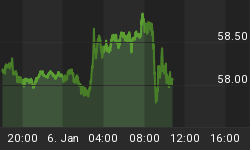For years, in fact for the duration of the U.S. dollar's use as a global carry currency, Emerging Markets - especially those with a currency peg - were a welcome destination for yield starved U.S. investors who found an easy source of yield differential pick up. All that came to a crashing halt first after the Chinese devaluation in 2015 which sent the dollar surging and slammed the EM sector, and then again in recent months when renewed strong dollar-inspired turmoil gripped the emerging markets, first due to idiosyncratic factors - such as those in Turkey and Argentina...

(Click to enlarge)
... and gradually across the entire world, as contagion spread.
And while many pundits have stated that there is no reason to be concerned, and that the EM spillover will not reach developed markets, Morgan Stanley points out that the real pain may lie ahead.
As the following chart from the bank's global head of EM Fixed Income strategy, James Lord, shows, whereas returns have slumped across EM rates, outflows from the EM space have a ways to go before they catch down to the disappointing recent returns.

(Click to enlarge)
One can make two observations here: the first is that despite the equity rout, EM stocks (as captured by the EEM ETF) have a long way to go to catch down to EM bonds as shown by the Templeton EM Bond Fund (TEMEMFI on BBG).

(Click to enlarge)
The second, more salient point is that a key reason for the solid growth across emerging markets in recent years, has been the constant inflow of foreign capital, resulting in a significant external funding requirement for continued growth, especially for Turkey as discussed previously. Related: Auto Industry In Biggest Slowdown Since 2008
But what happens if this outside capital inflow stops, or worse, reverses? This is where things get dicey. To answer that question, Morgan Stanley has created its own calculation of Emerging Market external funding needs, and defined it as an "external coverage ratio." It is calculated be dividing a country's reserves by its 12 month external funding needs, which in turn are the sum of the i) current account, ii) short-term external debt and iii) the next 12 months amortizations from long-term external debt.
More importantly, what this ratio shows is how long a given emerging market has before it runs out of cash. And, as the chart below shows, if we were investors in Turkey, Ukraine, Argentina, or any of the other nations on the left side of the chart - and certainly those with less than a year of reserves to fund its external funding needs - we would be worried.
So to answer the question posed by the title, which Emerging Markets will run out of funding first, start on the left and proceed to the right.

(Click to enlarge)
By Zerohedge
More Top Reads From Safehaven.com

















